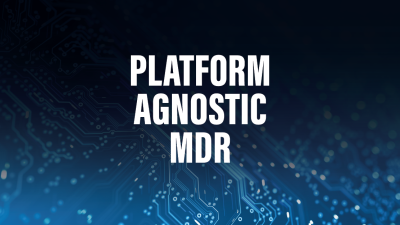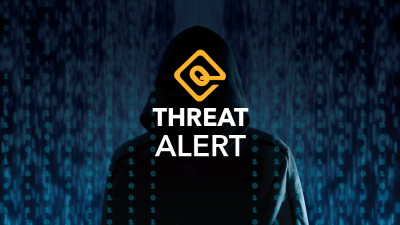If you’re part of a business that processes or creates a lot of data each day, you may be asking yourself: “What is SIEM? And how can it help me improve IT security?” If so, you’re not alone.
Since its advent about a decade ago, more and more enterprises have been turning to security information and event management (SIEM) in order to get a better handle on their data and mitigate security issues and breach events.
But how does that apply to you? Well, let’s start with the basics.
What is a Security Information and Event Management (SIEM) System and How Does it Work?
In layman’s terms, SIEM is a combination of two, previously separate types of security management software:
Security Information Management (SIM)
- Analyzes log and security event data, in real-time, to allow for threat monitoring, correlation of event data and incident response
Security Event Management (SEM)
- Facilitates log management by collecting, analyzing and reporting on log data

In essence, SIEM is a combined security approach that uses both of these two methods to provide a more holistic view of your data in real-time, allowing for a more hands-on approach to security monitoring.
What is a SIEM (Security Information and Event Management) System Utilized For?
Imagine you’re part of a business creating and processing a lot of security data each day. All this data must pass through your network devices, servers and domain controllers. Depending on your businesses’ size, that’s a lot of 1s and 0s to keep track of, and even more to make sense of.
That’s where a managed service using SIEM comes in.
SIEM tools are primarily used to gather and consolidate this immense amount of data to make it quickly accessible for human understanding. They allow an IT security team to pinpoint the source of any given cyberattack, data breach or malware infection.
What Does SIEM Help Businesses Achieve?
Delivering security alerts and reports on security incidents aren’t the only advantages of having a managed SIEM service working for you. With so much data being gathered and monitored in real-time, it also makes it a much simpler matter to remain compliant with the various governing bodies regulating a variety of industries.
SIEM tools were originally created to keep up with compliance policies such as:
- Health Insurance Portability and Accountability Act (HIPAA)
- Sarbanes-Oxley Act (SOX)
- Payment Card Industry Data Security Standard (PCI DSS)
- General Data Protection Regulation (GDPR)
Of course, with so many advancements in AI and machine learning today, the role of SIEMs in enterprise security is growing rapidly. No longer are SIEM tools being used only for compliance and threat analysis after the fact, but for proactive threat detection as well.
In the not-so-distant future, it’s likely we’ll be seeing the advent of SIEM tools making remediation suggestions based on presumptive analyses of network behaviours.
Would Every Business Benefit from a SIEM Solution?
The short answer is: not necessarily.
While Security Information and Event Management tools are a booming part of the IT and network security sector, SIEM revenues are forecast at $4.4 billion in 2020 out of a total of $123.8 billion for information security spend overall.
This is due in part to the large-scale nature of the data a SIEM system would require to be utilized efficiently.
Simply put, any Security Information and Event Management system only becomes a viable option for a business if there’s enough security data passing through a network to warrant its use.
Let’s not forget about the cost of running these systems for any substantial period of time. While outsourcing is shown to be the vastly more cost-effective option compared to in-house maintenance, that’s still a significant investment in IT security.
That’s why the majority of SIEM systems are used by enterprises producing a large amount of data requiring sorting. However, in our rapidly-expanding digital world, even small- to mid-sized businesses are finding an increased need to consider a managed SIEM service for their network.
What is a SIEM Tool’s Main Benefits?
If you’ve determined your business requires the use of an end-to-end Security Information and Event Management System, here are the main benefits you can expect from a managed SIEM service:
Live 24/7/365 network monitoring
- Any SIEM system will require a dedicated team of IT specialists for monitoring and managing. The advantage of outsourcing a service like Security Information and Event Monitoring is the right experts are already in place to do the work quickly.
Automated, Fast Detection
- When cyber threats make their way into your system, you need to know about them as soon as possible. That’s where the right SIEM can make all the difference. Having automated systems in place to detect irregularities in your security data means nothing will take your network by surprise.
Threat Remediation
- Detection is just the beginning. When an outside cyber threat makes its way into your network, the priority is to remove the threat. With a properly-managed and well-staffed SIEM system in place, response tools such as security engineers, honey pots and malware detonation are made more effective at removing the threat.
Expert Log Management
Nabbing and removing threats as they appear is all well and good, but that’s not all a dedicated SIEM system can do. By constantly monitoring your network, the right SIEM experts can detect patterns and identify vulnerabilities, allowing your network security to grow more robust over time.
Summing Up The Skyrocketing Use of SIEMs in Business
Now that you have a basic knowledge of what these systems are, you've moved beyond asking “What does SIEM mean?” or “What does SIEM stand for?”, you might now be confronting larger questions, like: “do I need Security Information and Event Management Services now, in the future, or at all?”
Only you can make that choice, but now that you know what an SIEM is and how it could benefit your business, you’re in a stronger position than before.
Here are some key points about Security Information and Event Management managed services to take with you:
- It’s the most effective, and often the only way to remain compliant with numerous government and industry regulations
- It can save you substantial amounts of money and frustration by pinpointing, catching and eliminating cybersecurity threats around the clock
- It’s more cost-effective than attempting an in-house solution
- It provides you with an increasingly-secure and impenetrable network over time
To learn more about how an expertly managed SIEM service could make a world of difference for you and your business, get in touch with us today.




